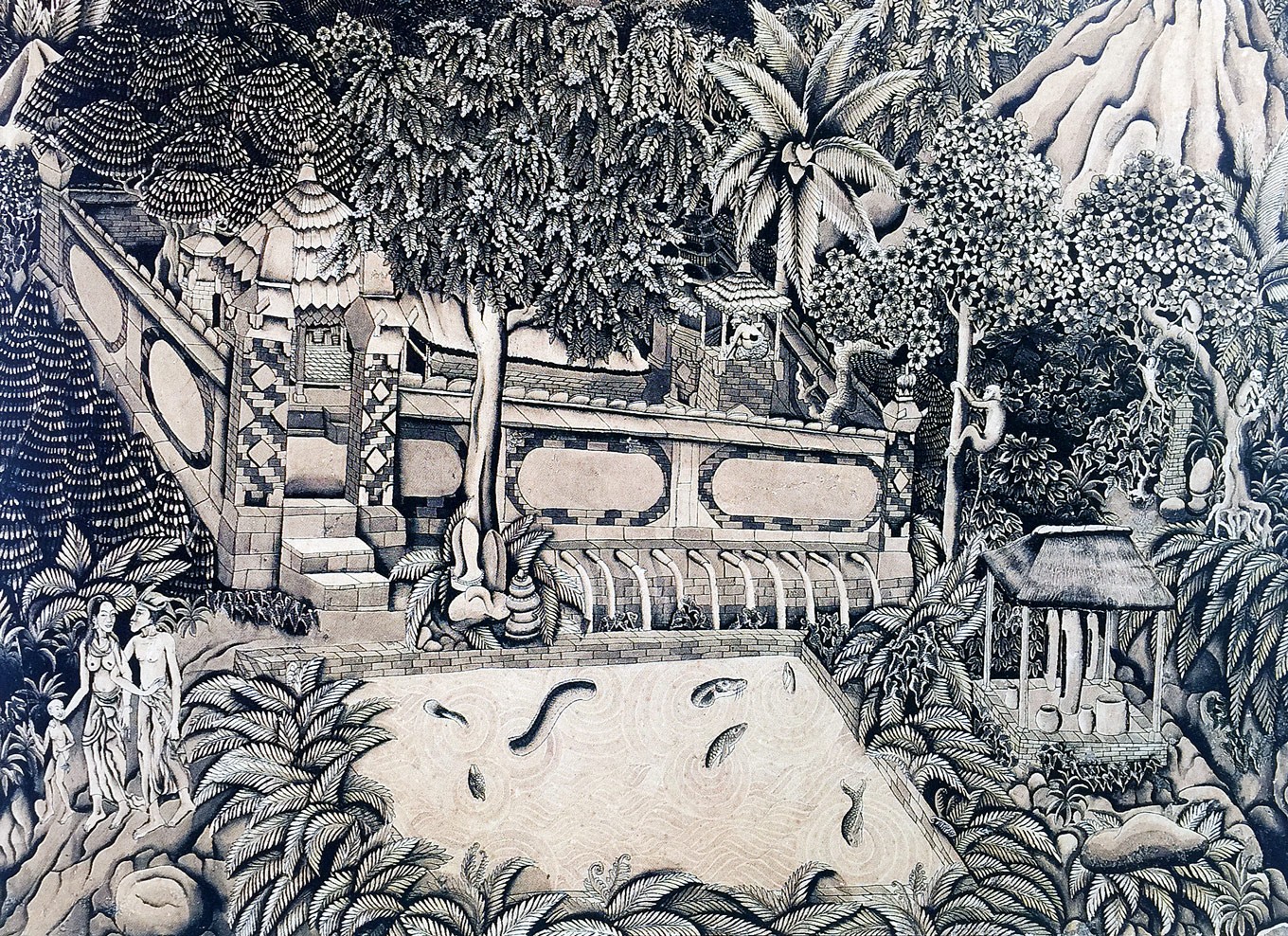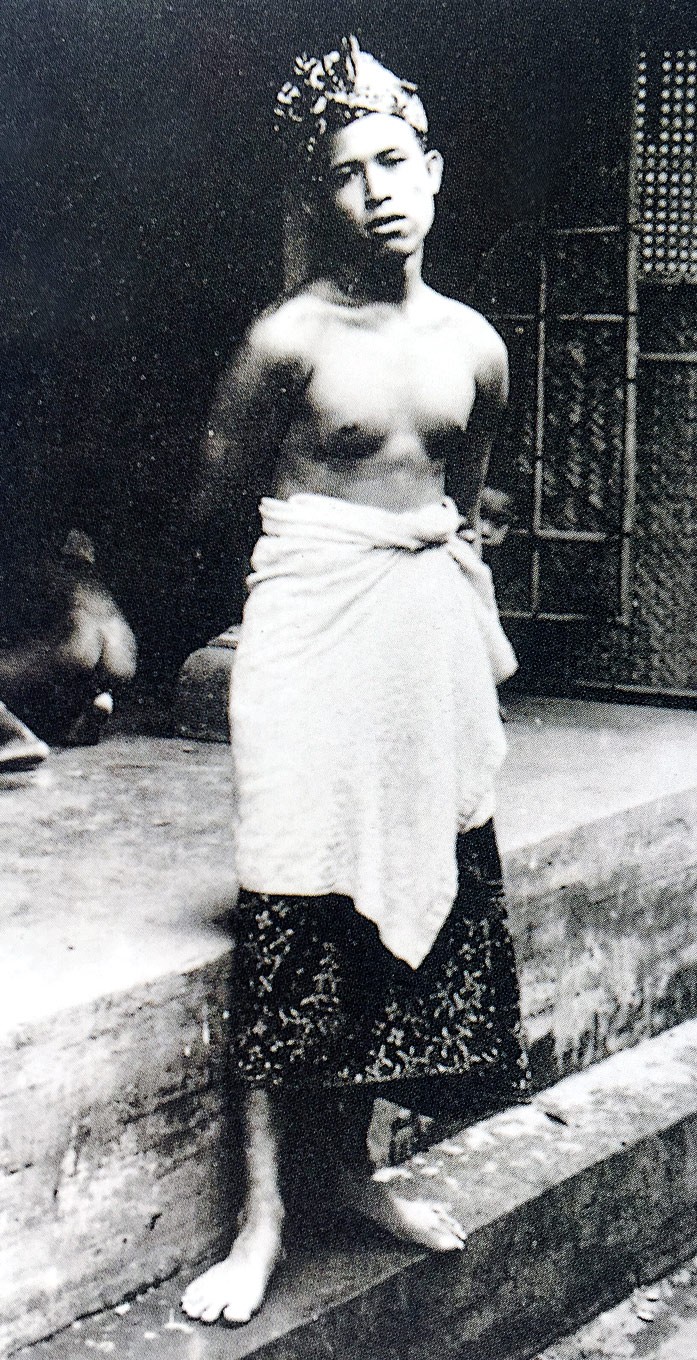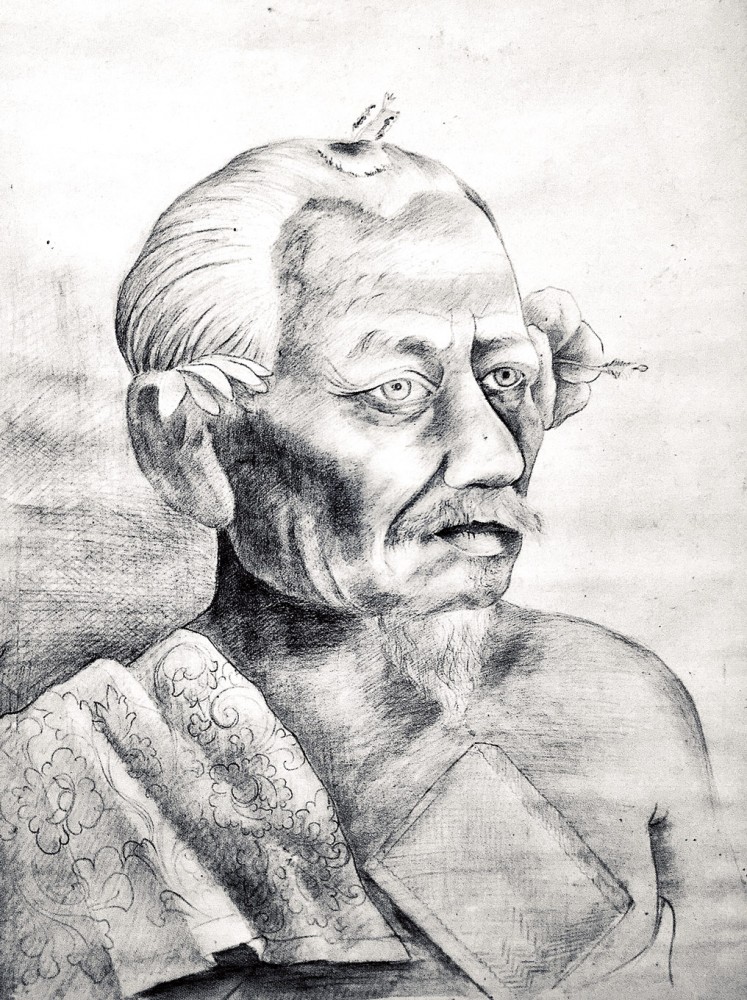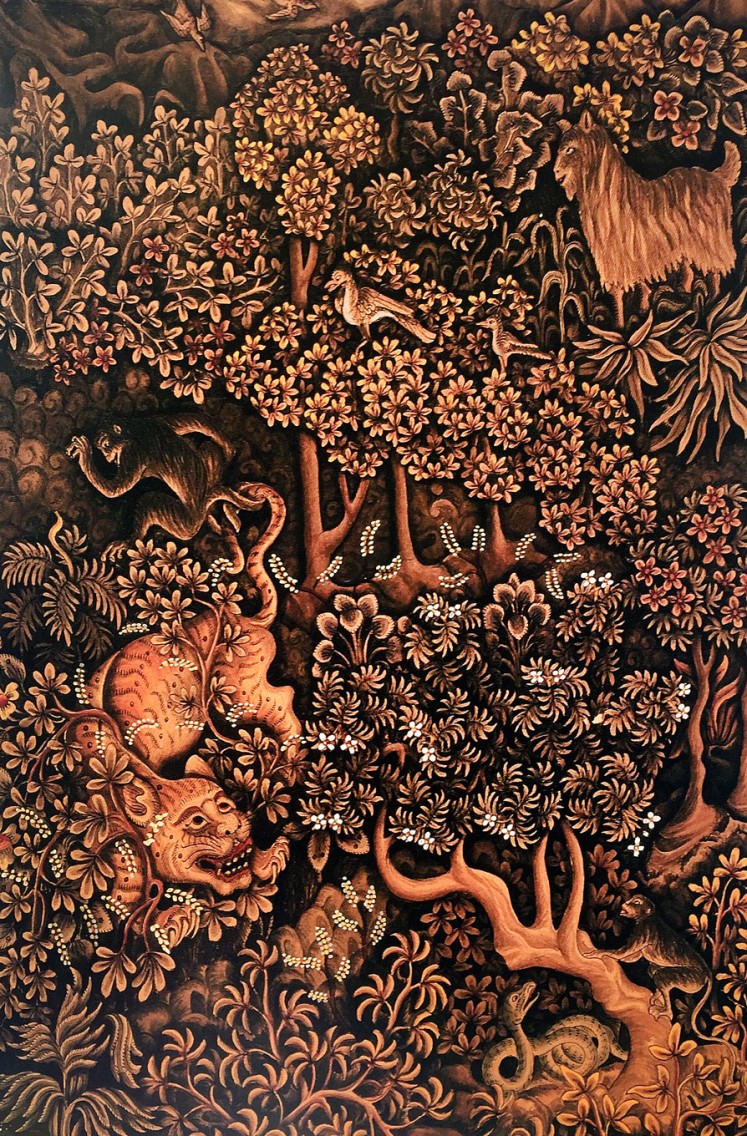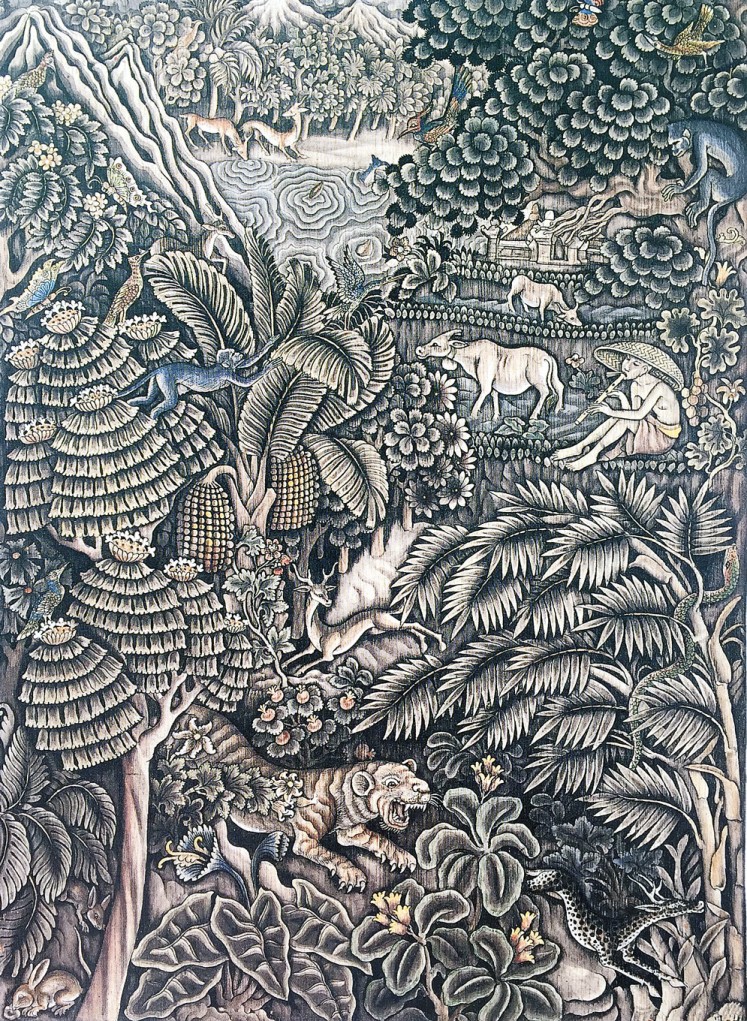Popular Reads
Top Results
Can't find what you're looking for?
View all search resultsPopular Reads
Top Results
Can't find what you're looking for?
View all search resultsI Nyoman Ngendon: Between paintings and bullets
Bali’s visual art community celebrates legendary Balinese painter I Nyoman Ngendon each year in September.
Change text size
Gift Premium Articles
to Anyone
Born in Banjar Dentiyis, Batuan village, in early September 1903, Balinese painter I Nyoman Ngendon would have been 115 years old.
The anniversary of his birthday has prompted Batuan’s villagers to remember the great contribution the legendary painter made as a figure who deserves exaltation not only among visual artists, but also as a member of the general public.
“He was a traditional artist who taught his juniors not to be detached from sociopolitical events,” said Ketut Sadia, a famous Batuan painter.
“Ngendon fought the struggle with his pen and a weapon. His name should be immortalized,” another painter, I Wayan Bendi, added.
Ngendon was an icon of Batuan painting in the 1930s to 1940s.
Observers of Bali’s visual art are not only reminded of his works, which are steeped in the magical and metaksu (auric) touch, but also his role in the fight against colonialism.
Although his paintings lacked depictions of tumultuous revolution because he portrayed collective myths, wayang (shadow puppets) and daily activities, Ngendon frequently advised young painters to always take heed of the social and political situations.
I Nyoman Ngendon ( 1937 ) (Puri Lukisan, Ubud/File)I Dewa Nyoman Mura taught Ngendon how to paint.
In the 1930s, he also learned a lot from Dutch artist Rudolf Bonnet who was then living in Campuan, Ubud.
When Bonnet — along with German painter Walter Spies and the then-king of Ubud, Tjokorda Gde Agung Sukawati — set up an association called Pita Maha in 1936, he joined them.
Ngendon seemed able to absorb the secularist bent of Bonnet but in reality, as seen in the book Reflections of Faith (Klaus D. Hohn, 1997), he was not totally captivated by the idea. He was more interested in ancient sites like the various reliefs at the Batuan and Bedahulu temples.
His works were thus locally derived and unique.
Mythology as a subject of Batuan paintings was reconciled with modern philosophical understanding and manifested itself in rhythmic and well defined forms.
Interestingly, while painting in the traditional style, Ngendon also tried modern realist-naturalist patterns as shown in his rare portrait image, Potret AAG Oka Ukir (Portrait of AAG Oka Ukir), due to his meeting modern artists in Yogyakarta.
He visited Yogyakarta as a national movement activist in 1935 and here, he became acquainted with revolutionary painters.
Ngendon’s rebellious spirit grew more intense especially when he heard that the revolutionary artists in Yogyakarta were part of the Indonesian Painters Association (Persagi), which was founded by Sudjojono and Agus Djaya in 1938. He felt the need to be part of the movement by creating posters against the colonizers in Bali, which brought him to the attention of the Dutch authorities.
Ngendon’s zeal was welcomed by the freedom fighters.
When Japan occupied Indonesia in 1942, Ngendon became a soldier in the Ngurah Rai Regiment.
With his painting skill, he was assigned to the information section. He produced many posters to arouse the spirit of the national struggle and distributed them to various areas. His patriotic action continued when Japan was defeated and the Netherlands Indies Civil Administration (NICA) attempted to recolonize the country in 1945.
Ngendon’s courage worried a number of fellow painters close to him.
“If Nyoman gets caught, he’s finished. He will surely be executed,” I Dewa Kompiang Pasek Malen, one of his peers, once said.
Harimau (Tiger) by I Nyoman Ngendon (JP/Agus Dermawan T.) Desa dan Satwa (Village and animals) by I Nyoman Ngendon (JP/Agus Dermawan T.)Bad luck indeed finally befell the painter. In 1946, he was captured by NICA troops in Ketewel village on charges of being a courier and a guerrilla fighter disguised as an artist.
Ngendon was tortured and on July 2, 1947, he was shot dead by the NICA police at the Dentiyis graveyard in Batuan.
The tragedy became even more horrific when witnesses said that after being shot, his remains were dragged behind a truck on the Sukawati highway. The Dutch wanted to spread fear among the local people but this did not work.
Ngendon’s trail of blood ignited the puputan (all out resistance) along the highway.
Strangely enough, no monument has ever been built by the state to mark his heroism.
“Not even an alley is named after him,” said Made Griyawan, a painter and tourist guide from Batuan.
Only a few of Ngendon’s works are available in Indonesia as most of them are owned by European collectors, including anthropologists Margaret Mead and Gregory Bateson from Washington who researched Batuan painting in the 1930s.
Those who wish to see more of Ngendon’s should visit Rijksmuseum voor Volkenkunde (Royal Ethnographic Museum) in the Netherlands, a nation that was once hostile to him and ended his life.

